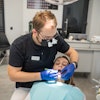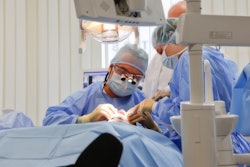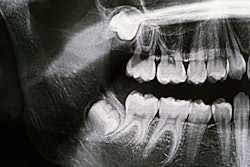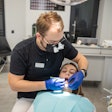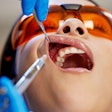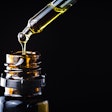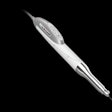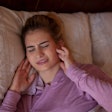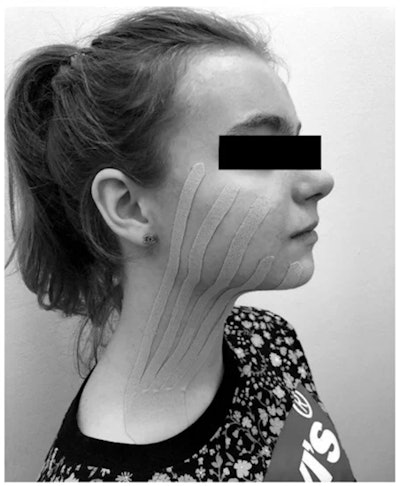
Using elastic kinesiology tape in conjunction with nonsteroidal anti-inflammatory drugs (NSAIDs) were more effective than pain medication alone in treating postoperative complications after wisdom tooth extraction. The pilot study was published recently in the Journal of Clinical Medicine.
Patients who had tape applied to their faces experienced less intense pain, increased jaw opening, and needed smaller doses of NSAIDs after mandibular impacted third-molar surgery, the authors wrote. Kinesio taping, which was developed in Japan, is a noninvasive method of alleviating complications related to inflammation.
“Kinesio taping is a relatively low-cost and simple procedure, reducing the use of drugs and showing encouraging prospects for the postoperative care after extraction of impacted mandibular third molars,” wrote the study's authors, led by Dr. Magdalena Dabrowska-Galas of the Medical University of Silesia in Poland (J Clin Med, April 4, 2023, Vol. 12:7, 2694).
Pain following tooth extraction reduces patients’ quality of life and often results in them taking analgesics. Pain management strategies like kinesio taping may reduce the use of NSAIDs and other medications.
 The taping method used on one of the third-molar extraction patients.Image courtesy of Dabrowska-Galas et al. Licensed by CC BY 4.0.
The taping method used on one of the third-molar extraction patients.Image courtesy of Dabrowska-Galas et al. Licensed by CC BY 4.0.
To compare the effectiveness of kinesio taping and the use of NSAIDs in the treatment of postoperative complications after wisdom tooth surgery, 30 participants were divided into two groups. Half of the participants had tape applied after wisdom tooth extraction while the other half did not. The tape was applied immediately after the extraction procedure. Patients were counseled not to take excessive care of the dressing and to maintain the tape for a minimum of three days and up to five days, according to the study.
The visual analog scale (VAS) was used to assess pain, and a caliper was used to measure trismus. Assessments were taken on the day of surgery, on the second day postsurgery, and on the seventh day postsurgery. Both groups were told to take 100 mg of NSAIDs if needed for pain, they wrote.
On the seventh day after surgery, those who had tape applied experienced greater maximal mouth opening compared to the control group. The difference between the groups was statistically significant (p = 0.0101), the authors wrote.
One day after surgery, pain reported by the patients according to the VAS was significantly lower (p = 0.0114) in the patients who had kinesiology tape applied versus those who did not. Moreover, patients from the test group reported a significantly lower intake of NSAIDs one day after surgery (p = 0.0102) and two days after surgery (p = 0.0131) compared to those who did not undergo kinesio taping, they wrote.
Nevertheless, the study had limitations, including the small sample size. Limited knowledge about the use of kinesiology tape limited the number of patients who were willing to participate in the study.
Despite this drawback, researchers are continuing to study the use of kinesio taping on a larger scale with a bigger sample size, the authors wrote. This study highlights measurable benefits, including the significant reduction in the use of NSAIDs, when dental surgeons collaborate with physiotherapeutic teams, they wrote.
“It should be introduced as a standard in the surgery of impacted lower molars,” Dabrowska-Galas and colleagues wrote.

